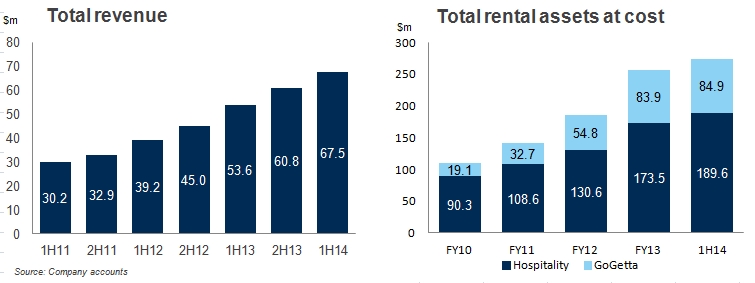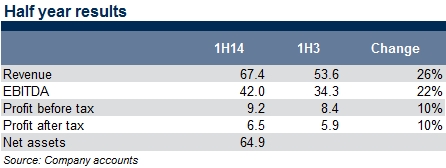Key points:
- Total revenue up 26%; rental assets up 7%; NPAT up 10%
- Core hospitality business continues with solid growth, GoGetta growth underperformed
- Second half focus on returning GoGetta to previous growth trajectory and international expansion
Silver Chef announced in December that it expected to miss full year guidance by the range of 10-15% (covered previously in The Wire here) and the half year results announced yesterday confirmed the issues raised by management at that time.
Whilst the company has continued to see strong growth in its core hospitality business, the GoGetta business has underperformed, with growth slowing (rental assets up just 1% from June 2013). To address the slowing GoGetta growth the company plans a renewed focus on the business with particular focus on recruitment and training of staff and in particular expertise in key sectors being targeted. The company aims to return the GoGetta business to previous levels of growth.
That said, the company still grew top line revenue by 26% and rental assets by 7%.

Revenues for the group were up 26% compared to the prior corresponding period with expenses up 30%. Increased expenses included costs of entering the Canadian market (set up costs of $0.56m). Net profit after tax was up 10% however this included some one off write backs, underlying net profit was flat.

The Silver Chef fixed rate 2018 bond is available to retail and wholesale investors from $10,000. Current yield to maturity is 6.61% and running yield 7.92%.For more information, please call your local dealer.
Key terms
Running yield
Running yield uses the current price of a bond instead of its face value and represents the return an investor would expect if he or she purchased a bond and held it for a year. It is calculated by dividing the coupon by the market price.

Yield to maturity The return an investor will receive if they buy a bond and hold the bond to maturity. It is the annualised return based on all coupon payments plus the face value or the market price if it was purchased on a secondary market. Yield to maturity thus includes any gain or loss if the security was purchased at a discount (below face value) or premium (above face value). It refers to the interest or dividends received from a security and is usually expressed annually or semi-annually as a percentage based on the investment’s cost, its current market value or its face value. Bond yields may be quoted either as an absolute rate or as a margin to the interest rate swap rate for the same maturity. It is a useful indicator of value because it allows for direct comparison between different types of securities with various maturities and credit risk. Note that the calculation makes the assumption that all coupon payments can be reinvested at the yield to maturity rate. Also, the yield and coupon are different.